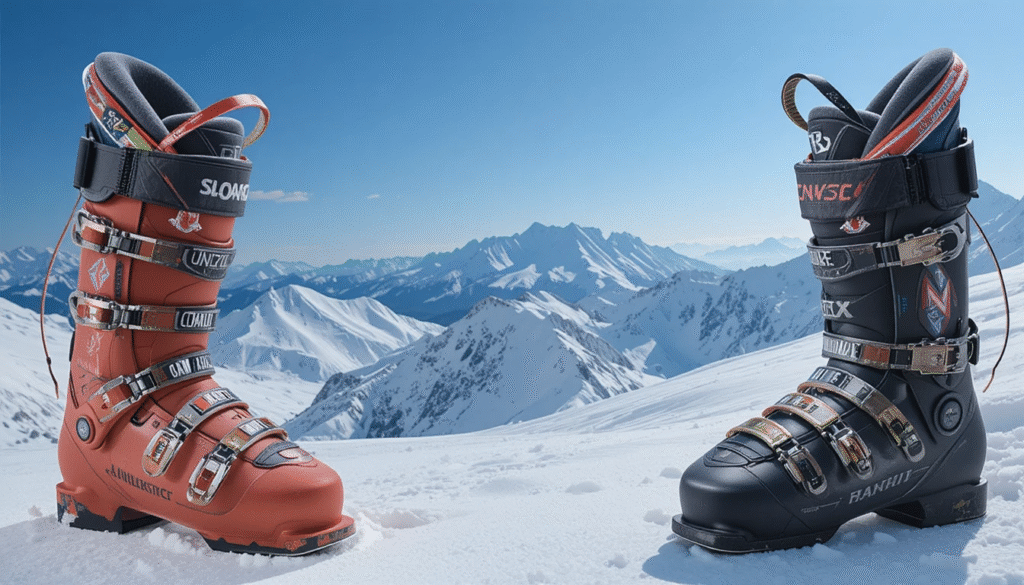
For Singapore travelers planning a ski trip abroad, one of the most important pieces of gear to understand is ski boots. They are essential for performance, comfort, and safety on the slopes. While Singapore’s tropical climate doesn’t provide snow, many residents frequently travel to winter destinations in Japan, Korea, or Europe. Knowing how to select the right ski boots helps ensure a smooth and enjoyable skiing experience.
Understanding Ski Boots
Ski boots are the direct connection between a skier and the skis. They transfer body movements into precise control, helping maintain balance and stability during skiing.
Purpose of Ski Boots
The main function of ski boots is to provide support, control, and warmth. They keep the foot stable inside the binding while allowing efficient energy transfer to the skis. Properly fitted ski boots reduce fatigue and improve performance on snowy terrain.
Key Components
Ski boots have several parts that work together to deliver comfort and control:
- Shell: The hard outer layer that protects the foot and provides stiffness.
- Liner: The soft inner layer for cushioning and warmth.
- Buckles and Straps: Secure the boot tightly around the foot and leg.
- Sole: Connects the boot to the ski binding and offers grip for walking on snow.
Each component plays a role in ensuring that the skier remains comfortable and secure while skiing.
Types of Ski Boots
Different types of ski boots are available, depending on skill level, terrain, and skiing style. Singapore travelers should consider where and how often they plan to ski before choosing a pair.
Alpine Ski Boots
These are the most common type of ski boots designed for downhill skiing. They provide firm ankle support and a solid connection to the skis. Alpine boots are ideal for those visiting ski resorts or engaging in recreational skiing.
Freestyle Ski Boots
Freestyle boots are built for flexibility and cushioning, allowing skiers to perform jumps and tricks in terrain parks. They offer a balance between comfort and responsiveness.
Touring or Alpine Touring (AT) Boots
These are designed for both uphill climbing and downhill skiing. Touring boots have a walk mode for easier movement and are lightweight for long-distance skiing adventures.
Cross-Country Ski Boots
Cross-country boots are made for mobility rather than stiffness. They are lighter and allow a natural foot motion for gliding across flat snow surfaces.
Choosing the Right Ski Boots
Selecting the right ski boots requires understanding your skill level, comfort preferences, and the type of skiing you intend to do. For travelers from Singapore, it’s important to find boots that fit well and suit the climate at their destination.
Fit and Comfort
A proper fit is the most important factor in ski boots. Boots should fit snugly without being too tight. A good fit minimizes blisters and ensures better control. The liner should hold your heel firmly, while still allowing your toes slight movement.
Flex Rating
The flex rating measures how stiff a ski boot is. A lower rating offers more flexibility and comfort, ideal for beginners. A higher flex rating provides more control and responsiveness, preferred by advanced skiers.
Sizing and Shape
Ski boot sizes are measured in “mondopoint,” based on the length of the foot in centimeters. Consider the width as well—some boots are designed for narrow feet, while others offer a wider fit.
Warmth and Insulation
Cold temperatures can affect comfort and performance. Ski boots with thermal insulation or heat-moldable liners help keep feet warm in extreme conditions.
Compatibility with Bindings
Always ensure that ski boots are compatible with your skis’ binding system. Alpine, touring, and cross-country bindings have different attachment methods. To get more information…
Materials and Construction
Modern ski boots use advanced materials to balance strength, flexibility, and comfort.
Plastic Shells
Most ski boots have polyurethane or polyether plastic shells that offer durability and stiffness for power transfer.
Custom Liners
Many boots feature removable liners that can be heat-molded to fit the shape of your foot. This customization enhances comfort and control.
Buckles and Closures
Metal buckles and Velcro straps ensure a secure fit. Adjustable mechanisms allow fine-tuning to your preference.
Soles and Grip Pads
The sole provides traction when walking on icy surfaces. Some boots come with replaceable grip pads for added safety and longevity.
Tips for Singapore Travelers Buying Ski Boots
Singapore residents often purchase or rent ski boots before traveling to snowy destinations. Here are key considerations to keep in mind.
Buy or Rent?
If you ski occasionally, renting may be more practical. For regular travelers or serious enthusiasts, buying ensures a perfect fit and long-term comfort.
Try Before You Buy
Always try ski boots with ski socks and stand in a skiing stance. This helps ensure that the boots match your body posture and skiing style.
Consider Travel Convenience
Ski boots are bulky, so choose a pair that’s lightweight and easy to pack. Some modern designs feature walk modes for easier movement when not skiing.
Temperature Adaptation
Singapore travelers should remember that boots can feel tighter in cold environments. A proper fitting allows for minor adjustments once on the slopes.
Maintenance and Care of Ski Boots
Proper care ensures that ski boots last for many ski seasons.
Drying After Use
After skiing, remove the liners and let them dry naturally. Avoid placing them near direct heat, as it can damage the materials.
Cleaning
Wipe the shell with a damp cloth to remove dirt and snow residue. Make sure the buckles and straps remain clean and functional.
Storage
Store ski boots in a cool, dry place. Fasten the buckles lightly to maintain their shape when not in use.
Regular Inspection
Check for wear on soles and buckles before each trip. Replacing small parts early prevents long-term damage.
Safety and Performance Benefits
The right pair of ski boots not only improves comfort but also enhances safety and performance.
Better Control
A snug fit ensures efficient power transfer from legs to skis, improving turning precision and balance.
Injury Prevention
Properly fitted boots reduce the risk of ankle or knee injuries by maintaining alignment during movement.
Improved Endurance
Comfortable ski boots reduce foot fatigue, allowing you to ski longer without discomfort.
Sustainable and Eco-Friendly Options
With growing awareness of environmental sustainability, some ski boot manufacturers now use recycled materials and eco-friendly production methods. Travelers conscious about their environmental impact can opt for boots made from sustainable materials or designed for long-term durability.
Conclusion
Ski boots are an essential part of ski equipment for Singapore travelers heading to winter destinations. They offer protection, comfort, and performance, making skiing more enjoyable and safe. Understanding boot types, fit, and materials helps you choose the perfect pair for your next adventure. Whether renting or buying, prioritizing comfort and compatibility ensures a rewarding experience on the slopes.

